How Long Can Cooked Oatmeal Be Left At Room Temperature
No time to read? Listen to my podcast episode dedicated to this article:
Somebody got this trend all wrong.
Well, not ALL wrong…but they messed up the only step in the recipe! We shouldn't be soaking our overnight oats in the refrigerator, we should be soaking them with warm water, at room temperature—or even warmer. And would you believe that cooking the oats afterwards actually makes them even MORE nutritious. This is not a food you want to eat raw. Let me break down the basics for you…
Our ancestors ate whole grains after soaking them or fermenting them. Over time they figured out that this was how grains needed to be prepared—in order to avoid illness. It was probably thanks to serendipity that they figured this out back then because there weren't any refrigerators…food was just left out. But as generations passed, and food culture diminished, we have been hastily preparing our grains…and we've even gone as far as thinking they are best uncooked! This is flat out wrong.
Did you know that the oatmeal box, back in the day, used to say "soak overnight" in the directions? What happened to that?
You see, all grains contain something called "phytic acid"—or phytates—in the outer layer or bran, and oats contain more phytates than almost any other grain. So, if this phytic acid is untreated, it will combine with important minerals in our body and block their absorption. I'm talking about calcium, magnesium, iron, zinc, and copper. We need these minerals, and our food supply is providing less and less of them because of modern farming methods. We should take every precaution to protect the minerals that are still available to us. Regular consumption of improperly prepared grains (also legumes, and nuts) can lead to mineral deficiencies, leaky gut, irritable bowel syndrome, bone loss, food allergies, and even mental illness…this is not only due to the phytic acid content, but more so a combination of these plant chemicals along with others like lectins, goitrogens, and oxalates to name a few. It's the dose that makes the poison, and it varies widely from person-to-person (or gut-to-gut).
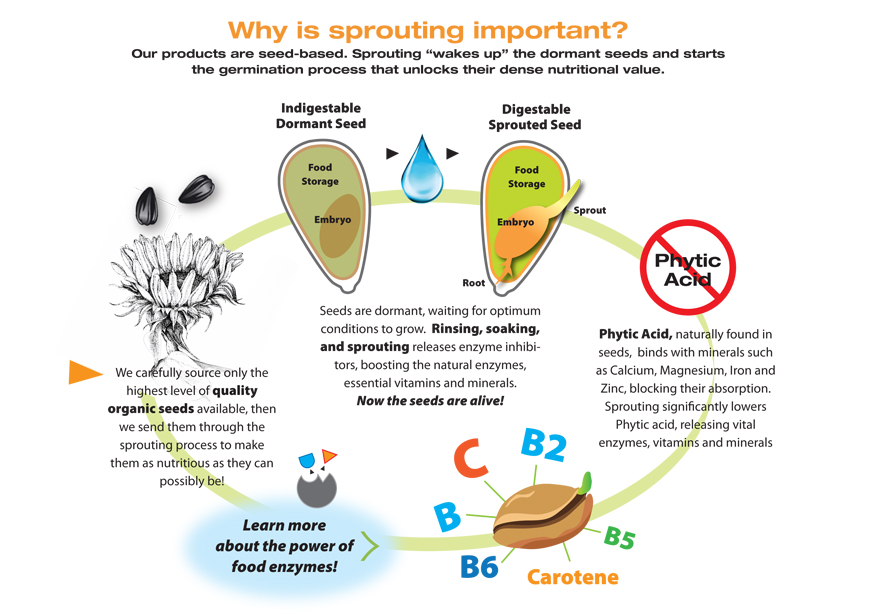
So what's the proper way to prepare these grains?
The process is simple really. All we need to do is soak the whole grains overnight at room temperature , or even warmer, and cook after soaking. It helps tremendously if, during the soak, you add an acid starter like liquid whey, kefir, yogurt, or even lemon juice. Allow the natural enzymes and other helpful organisms to begin fermenting the grains, for 7-24 hours, and this will neutralize a large portion of the phytic acid.
Soaking in warm, acidic or cultured water not only gets rid of this mineral-blocking substance, but it also releases all of the vitamins in grains, and encourages more healthy digestion by partially breaking down some of the proteins (like gluten). Win Win, all around! Finish your oatmeal by cooking for a quick 5-10 minutes (more on that in the recipe at the end of this post).
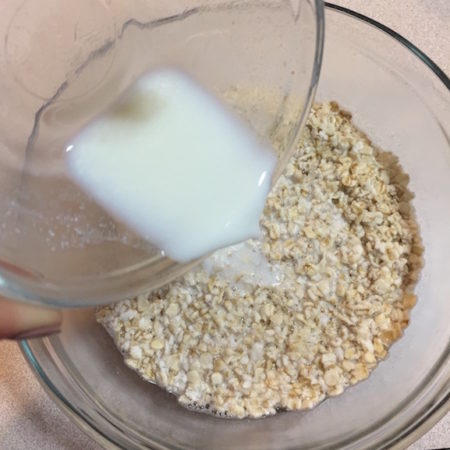
Spread the word to those we care about.
Oatmeal is one of those things that people eat habitually…every single morning. That's why it's important to spread the word. Although I do not usually consume oatmeal or most grains, I felt the need to focus on this recipe because many of my closest friends and family are enjoying oatmeal on a regular basis. My goal with My Longevity Kitchen is to help explain how we can maximize the nutrients in our food, and minimize toxins. And my passion lies in the ways of our ancestors, and their time-honored traditional cooking methods. Oatmeal can be nutritious, or quite the opposite. I hope you've learned a thing or two on how to make it truly nourishing. Here are some more tips for you, and the recipe!
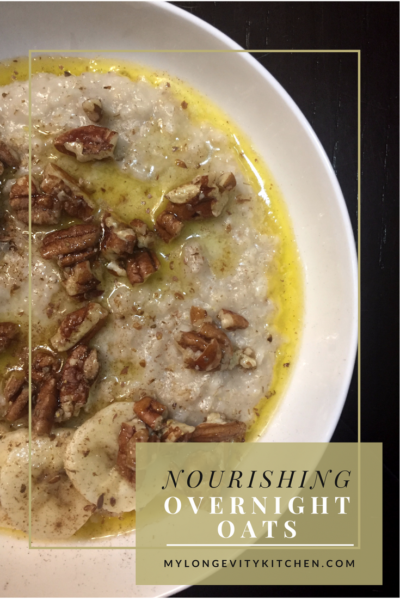
More Tips on Oats:
- Always buy ORGANIC Oats and any gluten-containing grains. This is imperative because science now shows that when the weed killer named Glyphosate is in the presence of Gluten (in our digestive tract) it passes through the intestinal wall. This will likely lead to immune responses, irritating symptoms, leaky gut, or a gluten intolerance. Take caution and only buy organic gluten grains.
- Always eat your oats and grains with a healthy fat like grass-fed butter, grass-fed cream, coconut milk, or coconut oil. The fats are necessary for us to absorb the fat-soluble vitamins in grains.
- Never buy your cracked or rolled oats in the bulk bin. You want them in a sealed package so the oils don't go rancid and cause free radicals in the body.
- It's highly recommended that you use a probiotic-rich liquid like whey (the liquid on top of your plain yogurt), buttermilk, whole-milk plain yogurt, whole-milk kefir, coconut kefir, when soaking your oats. This helps break down the phytic acid the most (and it also inhibits any harmful bacteria from growing). If you are completely against dairy, or don't have any on hand, then you can try another acidic medium like lemon or apple cider vinegar, but you probably should be adding another gluten-free grain like buckwheat groats (not actually a grain, but it is Gluten Free) because it helps to break down phytic acid in those stubborn oats (more on this here). These soaking methods will encourage the beneficial bacteria, enzymatic release, and proper breakdown of those stingy phytates in grains. That is why you'll see this recipe recommends adding up to 2 Tablespoons of such liquid while soaking.
More about Liquid Whey:
- "Acid" Whey, a byproduct from making unripened fresh cheeses, has been prescribed for an assortment of human ailments—even by Hippocrates himself in 460 BC—cool, huh? Throughout the middle ages, doctors continued to prescribe whey so much that "whey houses" were popping up all over western Europe. They treated everything from arthritis to anemia, with whey. Wow.
- Whey supplies lactobacilli, which are important probiotics. Liquid whey has many uses including making facto-fermented vegetables like when pickling and making sauerkraut. It's also used in condiments or beverages like kefir and cultured mayonnaise, or when soaking and sprouting nuts or grains (like the oatmeal in this recipe). The lactic acid in whey helps break down the stubborn grains and seed defenses.
- Traditional uses even include adding whey to sauces and soups; if you don't cook/reheat the soup after adding, you'll get the enzymatic benefits that help with digestion and nutrient availability. There do appear to be some continued benefits (even after cooking/heating the microbes) due to causes that are not entirely understood, but it may be simply because the microbes work to produce beneficial byproducts that help our gut and our nutrient-absorption.
- Note: powdered whey does not provide these same benefits or help with the soaking of grains. Learn more about whey in the links below.
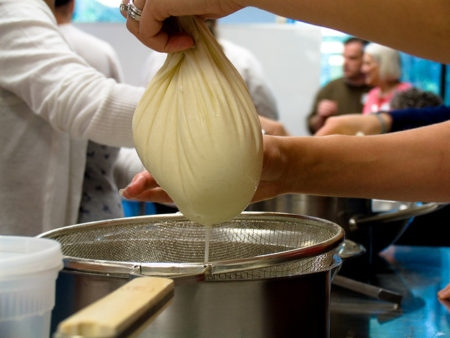
Make Your Own Whey (Easily):
- Get thee to the grocery store for some quality, plain, full-fat yogurt (Not Greek yogurt). Seek out brands that have active cultures (the label should say somewhere that it has lactobacillus or "live active cultures"), are organic, made from the milk of pasture-raised cow, goat, or sheep; and non-homogenized (this means there's less processing and the cream rises to the top— like it's supposed to).
- Line a mesh strainer with a thin dish towel, or muslin if you're lucky enough to have it (or 4+ layers cheesecloth should work), and place it over a bowl to rest. Add the plain yogurt and let it sit at room temperature for 5 hours. You'll notice the (acid) whey is dripping into the bowl, like the photo above.
- Next, gently gather the ends of your cloth, without squeezing, and tie it around a wooden spoon so it can hang over the top of the bowl and drip even more whey (you might use a pitcher instead of the bowl at this point because the sack will hang too low). Usually, you'd just leave it like this overnight to get the most whey out of it, but you can stop any time. I've tied the cloth on a high oven rack before and left it in the oven to drip into a bowl on the lower rack. Some people tie the sack on the faucet head and let it drip into a bowl in the sink. Now you have plenty of whey which will keep in a glass jar, in the fridge, for 6 months. Bonus: the cheese left behind is basically like cream cheese, perfect for dips or spreads, and will keep for a month when refrigerated.
Want to learn more about phytic acid, traditional methods, and soaking grains?
My biggest inspiration thus far is the cookbook called Nourishing Traditions. You should check it out if this topic of traditional food preparations interests you.
Tons of info here on phytic acid and soaking grains.
"The Whey Prescription", A Summary
Scientific Studies:
The importance of lactic acid bacteria for phytate degradation during cereal dough fermentation.
Effects of soaking, germination and fermentation on phytic acid, total and in vitro soluble zinc in brown rice
Degradation of phytic acid in cereal porridges improves iron absorption by human subjects
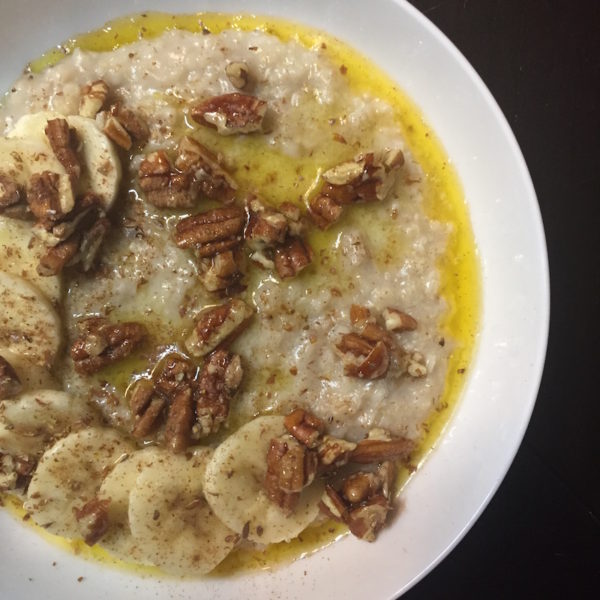
Nourishing Overnight Oats with Cinnamon, Banana, and Pecans
2016-11-28 12:09:06

Serves 2
Traditionally prepared, overnight oats topped with healthy fats and crunchy pecans. With a thoughtful soaking session, and the proper ingredients, this porridge-style oatmeal can be a healthful addition to your family table. The combination of salty and sweet reminds me of the hot breakfast cereal I ate growing up.
- 1 Cup gluten-free ORGANIC ROLLED OATS
- 1 Cup WARM FILTERED WATER
- 2 Tablespoons ACID WHEY or 1.5 teaspoons apple cider vinegar (see notes for info and substitutions)
- 1/2 teaspoon FINE SEA SALT
- 2 Tablespoons of Unsalted GRASS-FED BUTTER (or coconut cream, coconut oil)
- 1/2 Cup crushed PECANS
- 1 BANANA
- CINNAMON
- Pour 1 cup of OATS in a glass bowl, and stir in 1 cup of warm FILTERED WATER, and 2 Tablespoons of acid WHEY (or 1.5 teaspoons of apple cider vinegar). Cover loosely, and leave overnight in the oven or a cabinet. Allow to soak for at least 7 hours and up to 24 hours.
- Optional Step (for changes in flavor): Pour soaked oats into a mesh strainer and rinse with water.
- Pour your soaked oats into a non-stick pot, with 1 cup of FILTERED WATER, and 1/2 teaspoon of FINE SEA SALT. Turn heat to high and bring to a boil. Once boiling, COVER and turn heat to LOW to finish cooking for 5 more minutes.
- Portion into two bowls (or save some for later, in the refrigerator, for up to a week). Top each portion with 1 Tablespoon of unsalted GRASS-FED BUTTER (or coconut cream/oil), 1/2 sliced banana, 1/4 cup crushed pecans, and plenty of cinnamon. See notes for recommended sweeteners.
- WHEY: This is the liquid on top of plain, full fat yogurt. Large tubs of yogurt have about 2 Tablespoons of whey floating on top which you can just pour out and use for this recipe. See the info in this post on how to make your own whey and store it for 6 months! You may also use Kefir or Buttermilk, but the nutritional benefits are superior with whey. You can even just use the plain yogurt. A good non-dairy alternative that is also convenient is Lemon Juice or Apple Cider Vinegar, and for these you would use 1.5 teaspoons per cup of water.
- SWEETENERS: I think the banana slices are enough for a sweetener. If you need more sweetness, try sprinkling some erythritol, munk fruit sweetener, or xylitol on your oatmeal. We do love the addition of raw honey or maple syrup, but prefer not to use these sugary toppings since the oatmeal is already high in carbohydrates.
Adapted from Nourishing Traditions
Adapted from Nourishing Traditions
My Longevity Kitchen https://mylongevitykitchen.com/
Save Save
Save Save
How Long Can Cooked Oatmeal Be Left At Room Temperature
Source: https://mylongevitykitchen.com/the-truth-about-overnight-oats/
Posted by: murryconven1984.blogspot.com

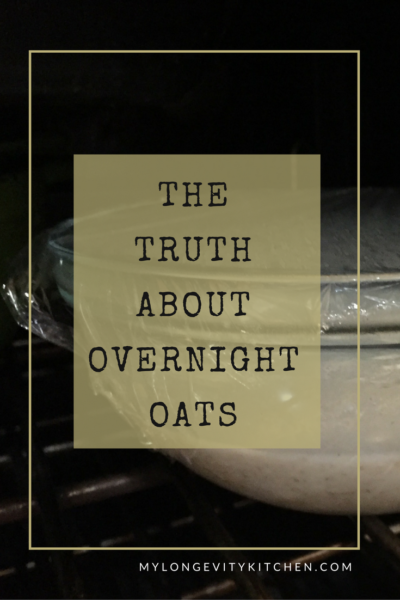
0 Response to "How Long Can Cooked Oatmeal Be Left At Room Temperature"
Post a Comment